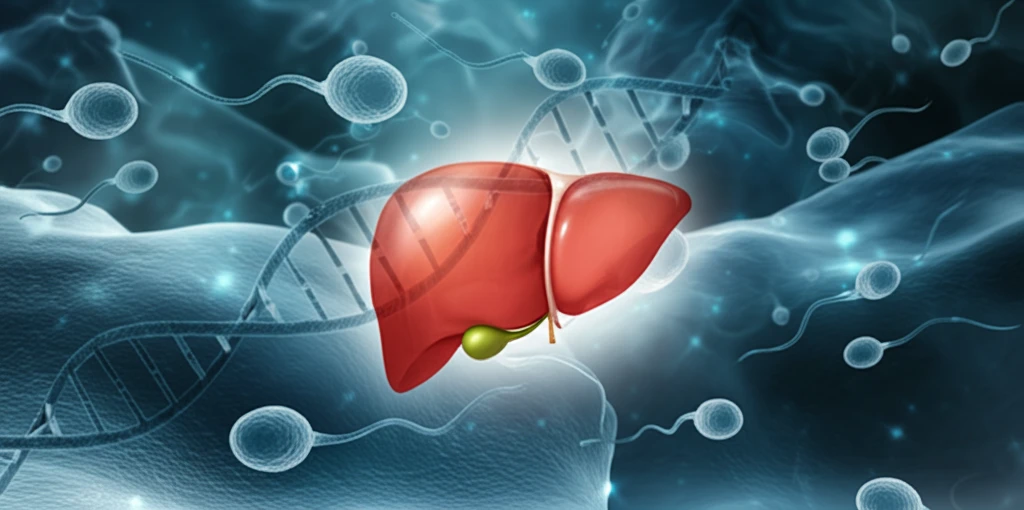
Unlock Your Liver's Potential: A Guide to Cutting-Edge Stem Cell Research
"Discover how scientists are using induced pluripotent stem cells (iPSCs) to revolutionize liver disease treatment and regenerative medicine."
The liver, a vital organ responsible for numerous metabolic processes, faces a growing threat from diseases and disorders. Liver diseases often lead to chronic conditions, requiring innovative treatment strategies beyond traditional methods. Regenerative medicine, with its focus on repairing or replacing damaged tissues and organs, offers a promising path forward. Stem cell research, particularly the use of induced pluripotent stem cells (iPSCs), is at the forefront of this revolution.
Induced pluripotent stem cells (iPSCs) are derived from adult cells that have been reprogrammed back into an embryonic-like state. This remarkable feat allows scientists to generate virtually any cell type in the body, providing an unlimited source for tissue engineering and regenerative therapies. In the context of liver disease, iPSCs hold the potential to create functional liver cells (hepatocytes) that can replace damaged tissue, offering a new hope for patients with liver failure or chronic liver conditions.
Recent research has focused on refining the methods to differentiate iPSCs into mature, functional hepatocytes. While earlier protocols were costly and often resulted in immature cells, scientists are now developing more efficient and cost-effective techniques. This article delves into a groundbreaking study comparing two differentiation protocols, highlighting the advancements and challenges in creating functional liver cells from iPSCs.
Turning Stem Cells into Liver Cells: What's the Process?

The study meticulously compared two protocols for differentiating human iPSCs into hepatocyte-like cells. The first protocol followed a conventional method adapted from Si-Tayeb et al. (2010). The second protocol, proposed by Kido et al., involved modifying the culture medium exchange frequency to reduce the use of expensive growth factors. Both protocols aimed to guide iPSCs through various stages of development, mimicking the natural process of liver cell formation.
- Definitive Endoderm Induction: iPSCs were treated with Activin A to initiate their commitment to becoming endoderm cells, the precursors of liver and other digestive organs.
- Hepatocyte Progenitor Commitment: The endoderm cells were further exposed to fibroblast growth factor (FGF) and bone morphogenetic protein 4 (BMP4) to drive their differentiation towards hepatocyte progenitors.
- Hepatoblast Progenitor Commitment: Hepatocyte growth factor (HGF) was used to promote the development of hepatoblast-like cells, which are more specialized liver cell precursors.
- Hepatic Maturation: Finally, the cells were matured using oncostatin M (OSM) to become functional hepatocyte-like cells.
The Future of Liver Disease Treatment: Stem Cells Leading the Way
This research contributes valuable insights into refining stem cell differentiation protocols for liver regeneration. While challenges remain in achieving fully mature and functional hepatocytes, the advancements highlighted in this study pave the way for more effective and personalized treatments for liver diseases. Future research will likely focus on optimizing these protocols, reducing costs, and enhancing the functionality of iPSC-derived liver cells to bring regenerative medicine closer to clinical application.
